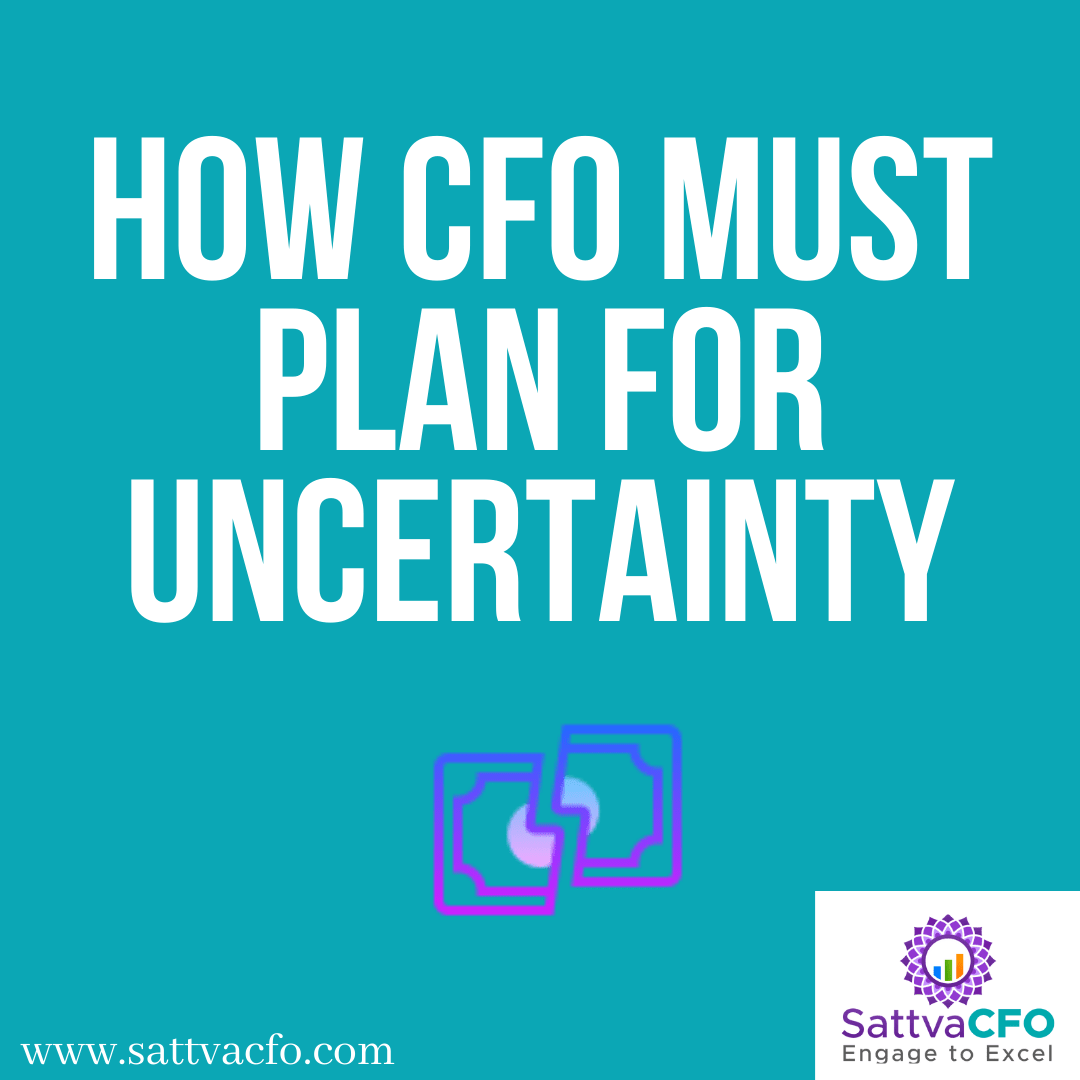How CFO must plan for Uncertainty for today & tomorrow
When confronted with a dynamic and uncertain circumstance, CFOs must assess the impact on revenue planning, cost management, production, headcount, and overall business performance. This places tremendous pressure on CFOs and finance teams to manage the financial consequences of the present pandemic and position their firm for future success. Articles discusses on leverage scenario modelling to build robust plan, effective treasury & cash flow management, drive agile forecasting, and build a strong foundation of people, processes, and technology. How CFO must plan for uncertainty for today & tomorrow.
Table of Contents
CFO must plan for Uncertainty
To fully understand and minimize risk for their firm, CFOs must be prepared for both short- and long-term Uncertainty. This necessitates a paradigm shift: to serve as the business’s strategic compass, finance leaders and their teams must embrace and accept continual change as the new normal. It’s impossible to estimate particular income and spending projections with any degree of accuracy during uncertain times. Businesses must be able to adapt to quickly changing environments, which requires organizational agility.
Leverage Scenario Modelling to build robust Plan
Scenario modeling enables you to validate your assumptions and create a more reliable future strategy. Additionally, it provides you with the information you need to make difficult decisions quickly and confidently. Scenario planning is the most well-known tool for strategic foresight. It consists of several stages: identifying forces that will shape the future market and operating conditions; examining how those forces may interact; imagining a variety of plausible futures; revising mental models of the present in light of those futures; and finally, utilizing those new models to develop strategies that prepare organizations for whatever the future brings.
Scenarios are widely used today. However, businesses execute a single exercise far too frequently and then put whatever lessons they gain on the shelf. If companies are to generate effective strategy in the face of Uncertainty, they must establish a process of continuous exploration—one that enables top executives to build permanent but flexible bridges between their current activities and their future thinking. Scenario modeling allows you to test your assumptions and create a more robust plan. It also arms you with the insights you need to make tough decisions quickly and confidently.
Effective Treasury & Cash Flow Management
Effective treasury and cash management are critical during change since they mean the difference between progressing and falling behind.
- Conducting more frequent cash flow assessments:
- Examining all levers available to you:
- Providing management with dashboards, data, and other tools for increased visibility
Drive Agile Forecasting
To be adaptable to change, finance teams must be able to swiftly recognize critical performance patterns and modify their plans based on an analysis of the impact on their bottom line. This is where agile forecasting enters the picture.
To get started with agile forecasting, follow these steps:
- Reforecasting should be guided by previous data as well as recent actuals.
- Reforecast at a frequency that is most appropriate for the task at hand. While quarterly may be adequate for significant operational spending items, a weekly cash flow, and headcount cadence may be more appropriate in times of change.
- Use scenario modeling to illustrate the consequences of today’s decisions on the future.
Build a Strong foundation of people, processes, and technology
Introducing new procedures such as these is not always straightforward. Integrating them into your organization demands establishing a foundation of people, processes, and technology to establish a culture and flow that keeps your business going forward—both during and outside of transition periods.
- Integration of data:.
- Visualization of data.
- A user-friendly interface. How CFO must plan for uncertainty for today & tomorrow.
Also read:





Leave a Reply